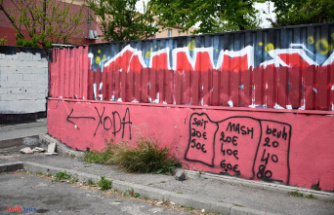Soaring gas and electricity prices are making Italy's national dishes an expensive treat. A Nobel laureate offers good advice and sparks a heated debate as families experiment.
Around 7 p.m. Patrizia sent a Whatsapp message: "I made 'pasta e fagioli', should I bring you something upstairs?" Patrizia is a friend who lives on the floor below. She is a passionate and therefore fantastic cook who has taken care of me during the first wave of the pandemic and the lockdown. In return, I brought her and her husband the newspaper. Of course, my answer is: "Bring on the pasta e fagioli". This pasta and bean dish, slightly watery but not overly so, is originally from Naples. It not only tastes great, you can eat it at any time of the year. Cold in summer, warm in autumn and winter. And a day later it tastes even better.
A few minutes later the doorbell rings. Patrizia comes in, puts down a small earthenware dish and says: "Yesterday you asked me whether anything would change in Italian cuisine because of the high gas and electricity prices. Here, I made this pasta e fagioli in a pressure cooker. Instead 40 minutes, because the beans take a long time to cook, even if you leave them in the water all night, it took a third of the time Ten minutes after the steam signal, I have the pot with the beans Turned off and left to stand. Later I added the pasta, let it boil again, but this time turned it off immediately at the steam signal and then left to stand."
And indeed, the pasta e fagioli tastes excellent, you just have to be a little more careful with the salt because, as Patrizia wrote to me in the evening, "more of it is absorbed". In the near future she also wants to prepare ossobuco, which literally means bone with a hole. Ossobuco is a veal mince stew that usually takes a long time to cook. If this is reduced by a lot in the pressure cooker, it becomes even shorter with passive cooking.
Passive cooking is currently one of the debates in which the renowned chefs in this country, who have been awarded Michelin stars, are at loggerheads. Although the topic is not new, it was initiated again by Giorgio Parisi. Parisi is one of three Nobel Prize winners in physics last year. A few weeks ago, he posted his advice on how to reduce the energy consumption of Italy's favorite dish, pasta.
Here's how it works: After throwing the pasta into the boiling water, you let it boil for a few more minutes, then cover it and turn it over. They should cook a total of one minute longer than normal. In this way you save up to 47 percent in costs, says Parisi and assures that the pasta remains "al dente". Because that is the top priority. If it's not "al dente", you can only stick wallpaper with it, they say in Italy.
For the Roman chef Antonello Colonna, however, this way of cooking is an absolute no-go. "With all due respect to the Nobel laureate," he said in a recent statement. "That's nonsense. The pasta is neither through nor raw, it's undefined". Davide Oldani from Milan sees things very differently: "Passive cooking is not new to me," he says of Parisi's suggestion. "I saw this method with my mother and use it myself with some ingredients."
"But you have to be careful what pasta you use," adds Patrizia's daughter Lilli, who came to me looking for her mother. Lilli is a librarian, part-time and out of passion she also does catering from time to time. "Egg pasta, spaghetti and smaller types of pasta are ideal for this, but not the thick rigatoni or paccheri." This cooking method is particularly ideal for vegetables, she says. Of course, you have to practice a bit so that it doesn't overcook. "But you quickly get the hang of it."
If you want to enjoy the typical, hearty Roman cuisine in the Eternal City, you are really spoiled for choice. I am a regular at the "Trattoria Checco er Carrettiere" in the heart of the Trastevere district. So I call Stefania Porcelli, one of the owners, to ask her how Checco! tries to keep costs under control have to stew for a long time."I don't think much of all this advice that is in the newspapers," says Stefania. "Whether at home or in the restaurant, all too often the flame is kept too high. Paying attention to this saves a lot of energy costs." When braising or Neapolitan ragu, the dish should simmer for many hours. ."
Paola, my friend from Palermo, is also a gifted cook. When she's visiting Milan, I always ask her to cook something for me. Paola once ran a restaurant in the Palazzo Gancia, the palace where director Luchino Visconti filmed the famous ball scene in The Leopard. She doesn't believe that the high energy costs can harm Italian cuisine. Rather, she bets that new recipes will be added. "We Italians don't lack imagination," she says. "Many of our famous and popular dishes come from very humble backgrounds and are made from leftovers."
As far as saving goes, instead of cooking every day, you'll be making larger batches and then freezing them. But that's nothing new either, says Paola. "Several Sicilian foods were invented to keep for several days." These include the many sweet and sour dishes. Like the vegetable caponata, for example. "There are several reasons why we have so many sweet and sour dishes," says Paola. "They last longer and taste even better the day after, which is why you prepare larger quantities."
Once upon a time there was the Sparherd. Patrizia still remembers that of her "Nonna" (grandmother). "It looked like a small cupboard. I was fascinated by the little doors it had. One to keep the food warm, another to store the wood for the fire. There were also rings that adjusted to the size of the pots. " Modern electric hotplates follow this principle. So Paola may be right: people will cook more efficiently, but nothing will change in principle about typical Italian cuisine.












